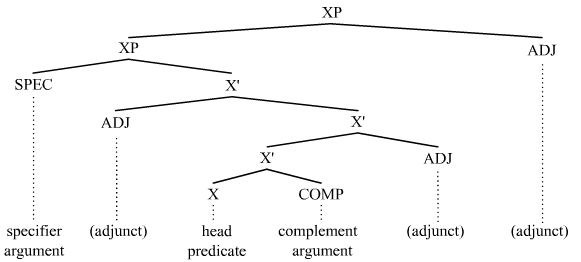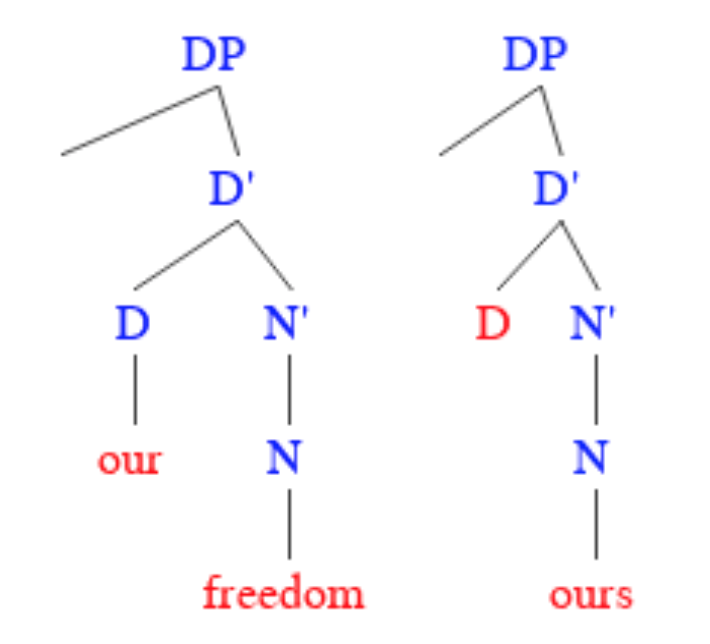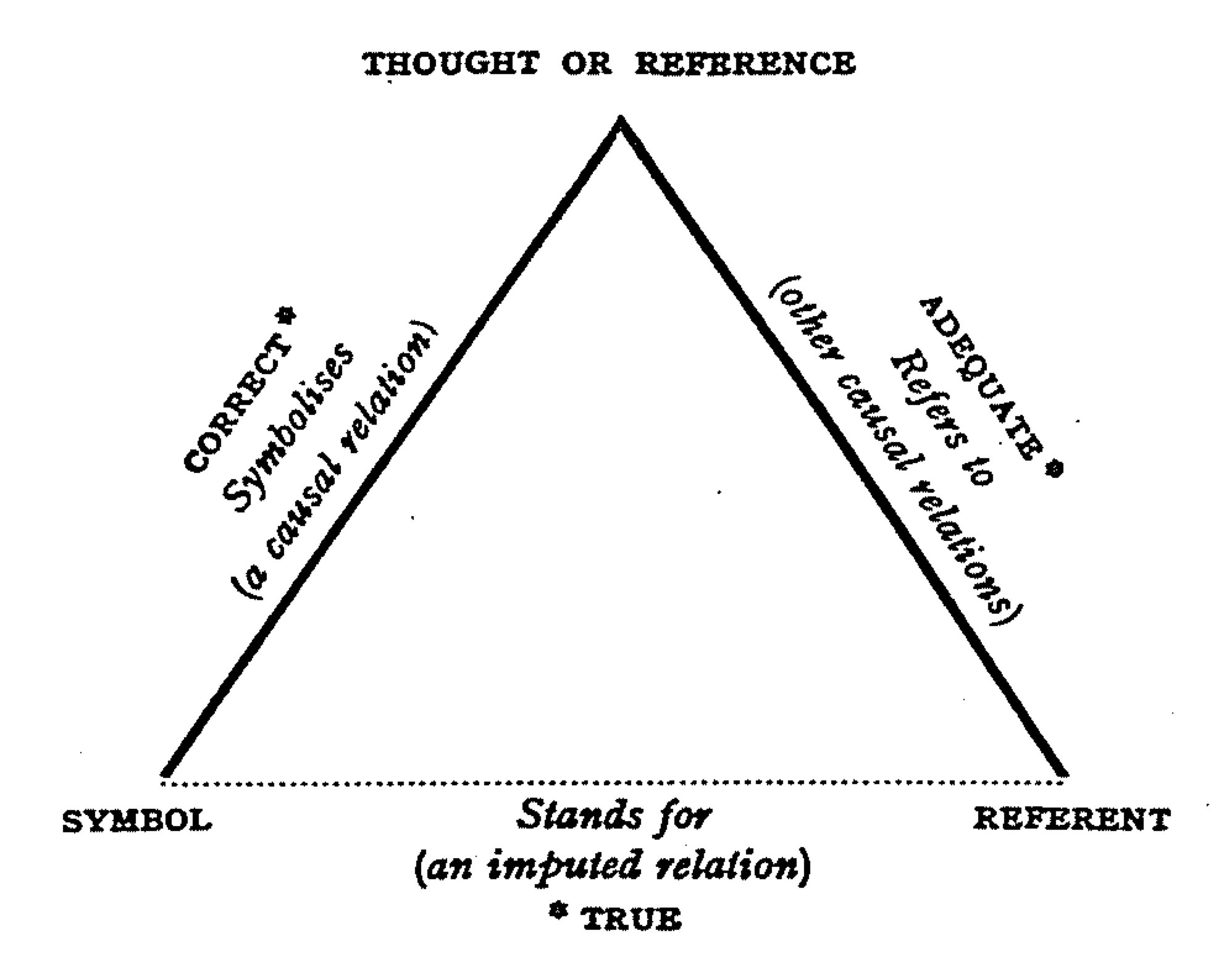|
Information Flow
In discourse-based grammatical theory, information flow is any tracking of referential information by speakers. Information may be ''new,'' i.e., just introduced into the conversation''; given,'' i.e., already active in the speakers' consciousness; or ''old,'' i.e., no longer active. The various types of activation, and how these are defined, are model-dependent. Information flow affects grammatical structures such as: *Word order ( topic, focus, and afterthought constructions). *Active, passive, or middle voice. *Choice of deixis, such as articles; "medial" deictics such as Spanish ''ese'' and Japanese ''sore'' are generally determined by the familiarity of a referent rather than by physical distance. *Overtness of information, such as whether an argument of a verb is indicated by a lexical noun phrase, a pronoun, or not mentioned at all. * Clefting: Splitting a single clause into two clauses, each with its own verb, e.g. ‘The chicken turtles tasted like chicken.’ bec ... [...More Info...] [...Related Items...] OR: [Wikipedia] [Google] [Baidu] |
Discourse
Discourse is a generalization of the notion of a conversation to any form of communication. Discourse is a major topic in social theory, with work spanning fields such as sociology, anthropology, continental philosophy, and discourse analysis. Following work by Michel Foucault, these fields view discourse as a system of thought, knowledge, or communication that constructs our world experience. Since control of discourse amounts to control of how the world is perceived, social theory often studies discourse as a window into Power (social and political), power. Within theoretical linguistics, discourse is understood more narrowly as linguistic information exchange and was one of the major motivations for the framework of dynamic semantics. In these expressions, denotations are equated with their ability to update a discourse context. Social theory In the humanities and social sciences, discourse describes a formal way of thinking that can be expressed through language. Discourse i ... [...More Info...] [...Related Items...] OR: [Wikipedia] [Google] [Baidu] |
Verb Argument
In linguistics, an argument is an expression that helps complete the meaning of a predicate, the latter referring in this context to a main verb and its auxiliaries. In this regard, the '' complement'' is a closely related concept. Most predicates take one, two, or three arguments. A predicate and its arguments form a ''predicate-argument structure''. The discussion of predicates and arguments is associated most with (content) verbs and noun phrases (NPs), although other syntactic categories can also be construed as predicates and as arguments. Arguments must be distinguished from adjuncts. While a predicate needs its arguments to complete its meaning, the adjuncts that appear with a predicate are optional; they are not necessary to complete the meaning of the predicate. Most theories of syntax and semantics acknowledge arguments and adjuncts, although the terminology varies, and the distinction is generally believed to exist in all languages. Dependency grammars sometimes call ... [...More Info...] [...Related Items...] OR: [Wikipedia] [Google] [Baidu] |
Luke Skywalker
Luke Skywalker is a fictional character in the ''Star Wars'' franchise. He was introduced in the original film trilogy as the main protagonist and also appears in the sequel trilogy. Raised as a poor moisture farmer on the desert planet Tatooine, Luke joins the Rebel Alliance and becomes a major figure in its struggle against the Galactic Empire. Training as a Jedi Knight under Jedi Masters Obi-Wan Kenobi and Yoda, he eventually confronts his father, the Sith Lord Darth Vader, in two pivotal duels. Years later, Luke trains his nephew Ben Solo and mentors the scavenger Rey. Luke is the twin brother of Leia Organa. Mark Hamill portrays Luke in all the films of the original and sequel trilogies, as well as in the television series '' The Mandalorian'' and '' The Book of Boba Fett''. Hamill won the Saturn Award for Best Actor for his portrayal of Luke in '' The Empire Strikes Back'' (1980), '' Return of the Jedi'' (1983) and '' The Last Jedi'' (2017). He was also nomina ... [...More Info...] [...Related Items...] OR: [Wikipedia] [Google] [Baidu] |
Yoda
Yoda () is a fictional character in the ''Star Wars'' franchise. He is a small, green humanoid alien who is powerful with the Force. He first appeared in the 1980 film '' The Empire Strikes Back'', in which he is voiced and puppeteered by Frank Oz, who reprised the role in '' Return of the Jedi'' (1983), the prequel trilogy, the sequel trilogy, and the animated series '' Star Wars Rebels''. Other actors who voice Yoda are Tom Kane, Piotr Michael, John Lithgow, Tony Pope and Peter McConnell. In addition to films and television series, Yoda appears in comics, novels, video games and commercials. In the original trilogy, Yoda lives in solitude on the swamp planet Dagobah. He is introduced as a former mentor of Obi-Wan Kenobi, and he trains Luke Skywalker in the ways of the Force until his death at the age of 900. In the prequel films, Yoda leads the Jedi High Council and trains young Jedi until they are assigned to a master. When the Clone Wars break out, he becom ... [...More Info...] [...Related Items...] OR: [Wikipedia] [Google] [Baidu] |
Chicken Turtle
The chicken turtle (''Deirochelys reticularia'') is a turtle native to the southeastern United States. It is the Monotypic taxon, only extant member of the genus ''Deirochelys'' and is a member of the freshwater marsh turtle family Emydidae. The chicken turtle's scientific name refers to its extremely long neck and distinctive net-like pattern on its upper shell. There are three regionally distinct subspecies (eastern, western and Florida), which are thought to have evolved when populations became separated during periods of glaciation. These subspecies can be distinguished by their appearance; the western chicken turtle displays dark markings along the seams of its plastron (lower shell), while the plastron of the Florida subspecies is a bright yellow or orange color. Fossil records show that the chicken turtle has been present in the region for up to five million years. Chicken turtles inhabit shallow, still or slow-moving bodies of water with plenty of vegetation and a muddy s ... [...More Info...] [...Related Items...] OR: [Wikipedia] [Google] [Baidu] |
Clefting
A cleft sentence is a complex sentence (one having a main clause and a dependent clause) that has a meaning that could be expressed by a simple sentence. Clefts typically put a particular Constituent (linguistics), constituent into Focus (linguistics), focus. In spoken language, this focusing is often accompanied by a special Intonation (linguistics), intonation. In English language, English, a cleft sentence can be constructed as follows: :''it'' + conjugated form of ''to be'' + ''X'' + subordinate clause where ''it'' is a cleft pronoun and ''X'' is the cleft constituent, usually a noun phrase (although it can also be a prepositional phrase, and in some cases an adjectival or adverbial phrase). The focus is on ''X'', or else on the subordinate clause or some element of it. For example: *''It's Joey (whom) we're looking for.'' *''It's money that I love.'' *''It was from John that she heard the news.'' Furthermore, one might also describe a cleft sentence as inverted. That is to s ... [...More Info...] [...Related Items...] OR: [Wikipedia] [Google] [Baidu] |
Pronoun
In linguistics and grammar, a pronoun (Interlinear gloss, glossed ) is a word or a group of words that one may substitute for a noun or noun phrase. Pronouns have traditionally been regarded as one of the part of speech, parts of speech, but some modern theorists would not consider them to form a single class, in view of the variety of functions they perform cross-linguistically. An example of a pronoun is "you", which can be either singular or plural. Sub-types include personal pronoun, personal and possessive pronouns, reflexive pronoun, reflexive and reciprocal pronoun, reciprocal pronouns, demonstrative pronouns, relative pronoun, relative and interrogative pronouns, and indefinite pronouns. The use of pronouns often involves anaphora (linguistics), anaphora, where the meaning of the pronoun is dependent on an antecedent (grammar), antecedent. For example, in the sentence ''That poor man looks as if he needs a new coat'', the meaning of the pronoun ''he'' is dependent on its ... [...More Info...] [...Related Items...] OR: [Wikipedia] [Google] [Baidu] |
Noun Phrase
A noun phrase – or NP or nominal (phrase) – is a phrase that usually has a noun or pronoun as its head, and has the same grammatical functions as a noun. Noun phrases are very common cross-linguistically, and they may be the most frequently occurring phrase type. Noun phrases often function as verb subjects and objects, as predicative expressions, and as complements of prepositions. One NP can be embedded inside another NP; for instance, ''some of his constituents'' has as a constituent the shorter NP ''his constituents''. In some theories of grammar, noun phrases with determiners are analyzed as having the determiner as the head of the phrase, see for instance Chomsky (1995) and Hudson (1990) . Identification Some examples of noun phrases are underlined in the sentences below. The head noun appears in bold. ::This election-year's politics are annoying for many people. ::Almost every sentence contains at least one noun phrase. ::Current economic weakness may be a re ... [...More Info...] [...Related Items...] OR: [Wikipedia] [Google] [Baidu] |
Lexical (semiotics)
Content words, in linguistics, are words that possess semantic content and contribute to the meaning of the sentence in which they occur. In a traditional approach, nouns were said to name objects and other entities, lexical verbs to indicate actions, adjectives to refer to attributes of entities, and adverbs to attributes of actions. They contrast with function words, which have very little substantive meaning and primarily denote grammatical relationships between content words, such as prepositions (in, out, under etc.), pronouns (I, you, he, who etc.) and conjunctions (and, but, till, as etc.). All words can be classified as either content or function words, but it is not always easy to make the distinction. With only around 150 function words, 99.9% of words in the English language are content words. Although small in number, function words are used at a disproportionately higher rate than content and make up about 50% of any English text because of the conventional pattern ... [...More Info...] [...Related Items...] OR: [Wikipedia] [Google] [Baidu] |
Verb
A verb is a word that generally conveys an action (''bring'', ''read'', ''walk'', ''run'', ''learn''), an occurrence (''happen'', ''become''), or a state of being (''be'', ''exist'', ''stand''). In the usual description of English, the basic form, with or without the particle ''to'', is the infinitive. In many languages, verbs are inflected (modified in form) to encode tense, aspect, mood, and voice. A verb may also agree with the person, gender or number of some of its arguments, such as its subject, or object. In English, three tenses exist: present, to indicate that an action is being carried out; past, to indicate that an action has been done; and future, to indicate that an action will be done, expressed with the auxiliary verb ''will'' or ''shall''. For example: * Lucy ''will go'' to school. ''(action, future)'' * Barack Obama ''became'' the President of the United States in 2009. ''(occurrence, past)'' * Mike Trout ''is'' a center fielder. ''(state of bein ... [...More Info...] [...Related Items...] OR: [Wikipedia] [Google] [Baidu] |
Japanese Language
is the principal language of the Japonic languages, Japonic language family spoken by the Japanese people. It has around 123 million speakers, primarily in Japan, the only country where it is the national language, and within the Japanese diaspora worldwide. The Japonic family also includes the Ryukyuan languages and the variously classified Hachijō language. There have been many Classification of the Japonic languages, attempts to group the Japonic languages with other families such as Ainu languages, Ainu, Austronesian languages, Austronesian, Koreanic languages, Koreanic, and the now discredited Altaic languages, Altaic, but none of these proposals have gained any widespread acceptance. Little is known of the language's prehistory, or when it first appeared in Japan. Chinese documents from the 3rd century AD recorded a few Japanese words, but substantial Old Japanese texts did not appear until the 8th century. From the Heian period (794–1185), extensive waves of Sino-Ja ... [...More Info...] [...Related Items...] OR: [Wikipedia] [Google] [Baidu] |
Reference
A reference is a relationship between objects in which one object designates, or acts as a means by which to connect to or link to, another object. The first object in this relation is said to ''refer to'' the second object. It is called a ''name'' for the second object. The next object, the one to which the first object refers, is called the '' referent'' of the first object. A name is usually a phrase or expression, or some other symbolic representation. Its referent may be anything – a material object, a person, an event, an activity, or an abstract concept. References can take on many forms, including: a thought, a sensory perception that is audible ( onomatopoeia), visual (text), olfactory, or tactile, emotional state, relationship with other, spacetime coordinates, symbolic or alpha-numeric, a physical object, or an energy projection. In some cases, methods are used that intentionally hide the reference from some observers, as in cryptography. References feature ... [...More Info...] [...Related Items...] OR: [Wikipedia] [Google] [Baidu] |






